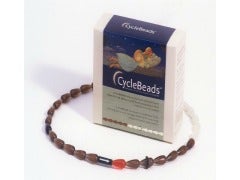
CycleBeads, which aid the rhythm method, apparently have a 95 percent success rate.
By Kait Smith — Written on Oct 04, 2011

Despite what you may have learned in high school sex ed class, the rhythm method may actually be quite an effective form of birth control.
New research says a birth control method that tracks a woman's 12-day "fertile window" is more effective than a condom at preventing pregnancy.
RELATED: A Guide To The Best Birth Control For Every Type Of Woman
Traditionally, the rhythm method consists of a woman keeping track of her menstrual cycle. That 12-day window takes into account the 24-hour lifespan of an egg and the five-day survival rate of sperm.
A previous study showed that the method was more than 95 percent effective at preventing pregnancy, which is a higher success rate than contraceptive devices like condoms or diaphragms. The new research, published in the October issue of the Journal of Family Planning & Reproductive Health Care, found that more than 1,600 women indicated they would likely continue to use the method.
RELATED: 'What's Your Number' Movie Contest: Dish Your Number, Win A Prize
Those seeking an easy way to track their "window" can opt to use CycleBeads. Developed by the Institute for Reproductive Health, each of the 32 color-coded beads on this string represents a day of the menstrual cycle.
Here's how it works: The woman moves a small rubber ring over the bead that represents her current "day." The first day of her period if signified by a red bead. The following brown beads mean pregnancy is very unlikely. Beads 8 through 19 are glow-in-the-dark white, but act as a "red flag" to represent fertile days.
The problem that this study doesn't address is one that was really driven home in my high school health classes—sexually transmitted diseases. Sure, CycleBeads may help you prevent a bun from conceiving in your oven, but if you're not married or in a committed relationship where you know your partner is clean, the rhythm method won't prevent you from contracting HIV, syphilis or the handful of other diseases that can be passed during intercourse.
Related Stories From YourTango:
RELATED: Are Married Couples At Risk For STDs?
More for You:
What do you think? Would you use CycleBeads, or try the rhythm method?
